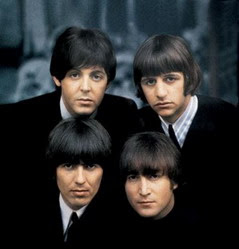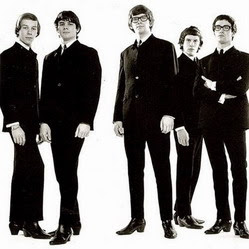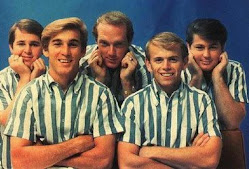 Focal Point released one fair pop-psychedelic single in 1968, "Sycamore Sid"/"Love You Forever." "Sycamore Sid" was typical of much British rock of the time in its sketch of an eccentric character, played out against a pleasant medium-tempo power pop arrangement combining hard rock guitar riffs, organ, and piano. "Love You Forever" was an altogether more romantic, dainty piece, like a woozy update of late-'50s/early-'60s teen rock ballads. A few other unreleased Focal Point tracks that have surfaced have similar fey, never-never land textures (indeed one of their songs was called "Never Never"), albeit with nice mild pop melodies and psychedelic-influenced organ/guitar arrangements.The Liverpool band's Beatles/Apple connection arose in 1967 when vacationing songwriters Paul Tennant and Dave Rhodes came across Paul McCartney, who was walking his dog in London's Hyde Park. McCartney actually gave them the name and number of Terry Doran, who was then starting Apple's music publishing company (Apple had yet to start its record label). After hearing the pair play some songs in his office, Doran was impressed enough to record some demos with the duo, which he played to Brian Epstein and John Lennon. Epstein suggested that the two form a band called Focal Point, and although he died shortly afterward, Tennant and Rhodes did form the group in Liverpool and sign a contract with Apple Publishing. Apple even rented the group a flat in London and gave them access to a recording studio in the Apple office for cutting demos. They got a contact with Deram and recorded their single, but after it made few waves, Apple's interest in the band seemed to peter out, and they never recorded again. (AMG).
Focal Point released one fair pop-psychedelic single in 1968, "Sycamore Sid"/"Love You Forever." "Sycamore Sid" was typical of much British rock of the time in its sketch of an eccentric character, played out against a pleasant medium-tempo power pop arrangement combining hard rock guitar riffs, organ, and piano. "Love You Forever" was an altogether more romantic, dainty piece, like a woozy update of late-'50s/early-'60s teen rock ballads. A few other unreleased Focal Point tracks that have surfaced have similar fey, never-never land textures (indeed one of their songs was called "Never Never"), albeit with nice mild pop melodies and psychedelic-influenced organ/guitar arrangements.The Liverpool band's Beatles/Apple connection arose in 1967 when vacationing songwriters Paul Tennant and Dave Rhodes came across Paul McCartney, who was walking his dog in London's Hyde Park. McCartney actually gave them the name and number of Terry Doran, who was then starting Apple's music publishing company (Apple had yet to start its record label). After hearing the pair play some songs in his office, Doran was impressed enough to record some demos with the duo, which he played to Brian Epstein and John Lennon. Epstein suggested that the two form a band called Focal Point, and although he died shortly afterward, Tennant and Rhodes did form the group in Liverpool and sign a contract with Apple Publishing. Apple even rented the group a flat in London and gave them access to a recording studio in the Apple office for cutting demos. They got a contact with Deram and recorded their single, but after it made few waves, Apple's interest in the band seemed to peter out, and they never recorded again. (AMG).Tracklist:
1. Miss Sinclair; 2. Sycamore Sid; 3. Hassle Castle; 4. Never Never; 5. Lonely Woman; 6. Far Away from Forever; 7. Love You Forever; 8. Tales from the Gpo Files; 9. McKinley Morgan the Deep Sea Diver; 10. Falling out of Friends; 11. Girl on the Corner; 12. Goodbye Forever; 13. This Time She's Leaving; 14. 'Cept Me; 15. Miss Sinclair [Demo Version]; 16. Miss Sinclair [Alternate Version]; 17. Hassle Castle [Demo Version]; 18. Never Never [Alternate Version]; 19. Reflections [Demo Version]; 20. Reflections




























































